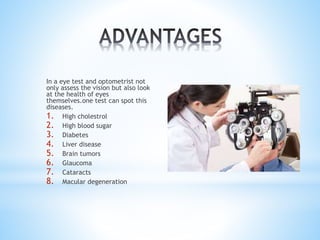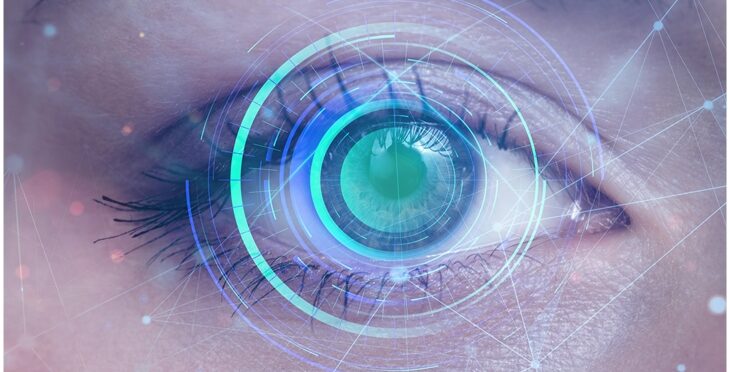Find the very best Glaucoma Service Near Me: Expert Eye Treatment Solutions
Wiki Article
The Role of Advanced Diagnostic Tools in Identifying Eye Disorders
In the world of ophthalmology, the usage of advanced diagnostic devices has actually transformed the very early recognition and monitoring of numerous eye disorders. From spotting refined changes in the optic nerve to monitoring the progression of retinal diseases, these technologies play a crucial function in improving the accuracy and efficiency of identifying ocular problems. As the demand for accurate and timely diagnoses proceeds to grow, the integration of cutting-edge devices like optical coherence tomography and aesthetic area testing has actually ended up being vital in the world of eye care. The intricate interaction in between technology and sensory techniques not only clarifies elaborate pathologies however additionally opens up doors to tailored therapy approaches.Importance of Early Diagnosis
Very early diagnosis plays an essential role in the efficient monitoring and therapy of eye disorders. Timely recognition of eye conditions is crucial as it enables punctual treatment, potentially avoiding more development of the condition and decreasing long-lasting problems. By finding eye problems at an early stage, healthcare suppliers can offer suitable therapy strategies tailored to the specific condition, inevitably resulting in far better end results for people. Additionally, early medical diagnosis allows clients to gain access to essential assistance solutions and sources earlier, improving their overall top quality of life.
Technology for Discovering Glaucoma
Advanced diagnostic innovations play an essential function in the early detection and monitoring of glaucoma, a leading cause of irreparable blindness worldwide. One such innovation is optical coherence tomography (OCT), which offers detailed cross-sectional pictures of the retina, allowing for the dimension of retinal nerve fiber layer thickness. This dimension is crucial in analyzing damages caused by glaucoma. Another advanced device is visual field testing, which maps the level of sensitivity of a client's visual area, aiding to identify any areas of vision loss characteristic of glaucoma. In addition, tonometry is used to measure intraocular pressure, a major risk variable for glaucoma. This examination is essential as elevated intraocular pressure can bring about optic nerve damage. Newer modern technologies like the usage of artificial knowledge algorithms in evaluating imaging data are revealing appealing results in the early detection of glaucoma. These sophisticated published here diagnostic devices make it possible for eye doctors to detect glaucoma in its beginning, allowing for timely treatment and better monitoring of the illness to stop vision loss.Function of Optical Coherence Tomography

OCT's capacity to quantify retinal nerve fiber layer thickness allows for specific and objective measurements, helping in the very early detection of glaucoma also before aesthetic field problems come to be apparent. Generally, OCT plays a critical role in boosting the analysis precision and monitoring of glaucoma, eventually adding to far better outcomes for individuals at threat of vision loss.
Enhancing Diagnosis With Visual Field Screening
A crucial part in thorough sensory examinations, aesthetic area testing plays a critical function in improving the analysis process for different eye disorders. By assessing the complete level of a person's aesthetic area, this test gives vital information concerning the functional integrity of the entire aesthetic path, from the retina to the aesthetic cortex.Aesthetic field screening is specifically useful in the diagnosis and administration of conditions such as glaucoma, optic nerve disorders, and different neurological diseases that can impact vision. Via quantitative measurements of outer and central vision, medical professionals can discover refined changes that might indicate the visibility or important link progression of these disorders, even prior to recognizable signs occur.
Moreover, aesthetic field screening permits the surveillance of treatment efficacy, aiding eye doctors customize restorative interventions to specific patients. eyecare near me. By tracking modifications in aesthetic field performance over time, doctor can make educated decisions regarding adjusting medications, suggesting surgical interventions, or implementing various other ideal measures to protect or enhance a person's aesthetic feature
Handling Macular Degeneration

Final Thought
In final thought, advanced analysis tools play an important function in recognizing eye conditions at an early stage. Technologies such as Optical Comprehensibility Tomography and aesthetic area screening have substantially improved the precision and performance of identifying problems like glaucoma and macular deterioration. Early discovery permits for timely treatment and monitoring of these problems, ultimately causing much better results for patients. It is necessary for health care specialists to remain upgraded on these developments to give the most effective possible look after their people. eyecare near me.Report this wiki page